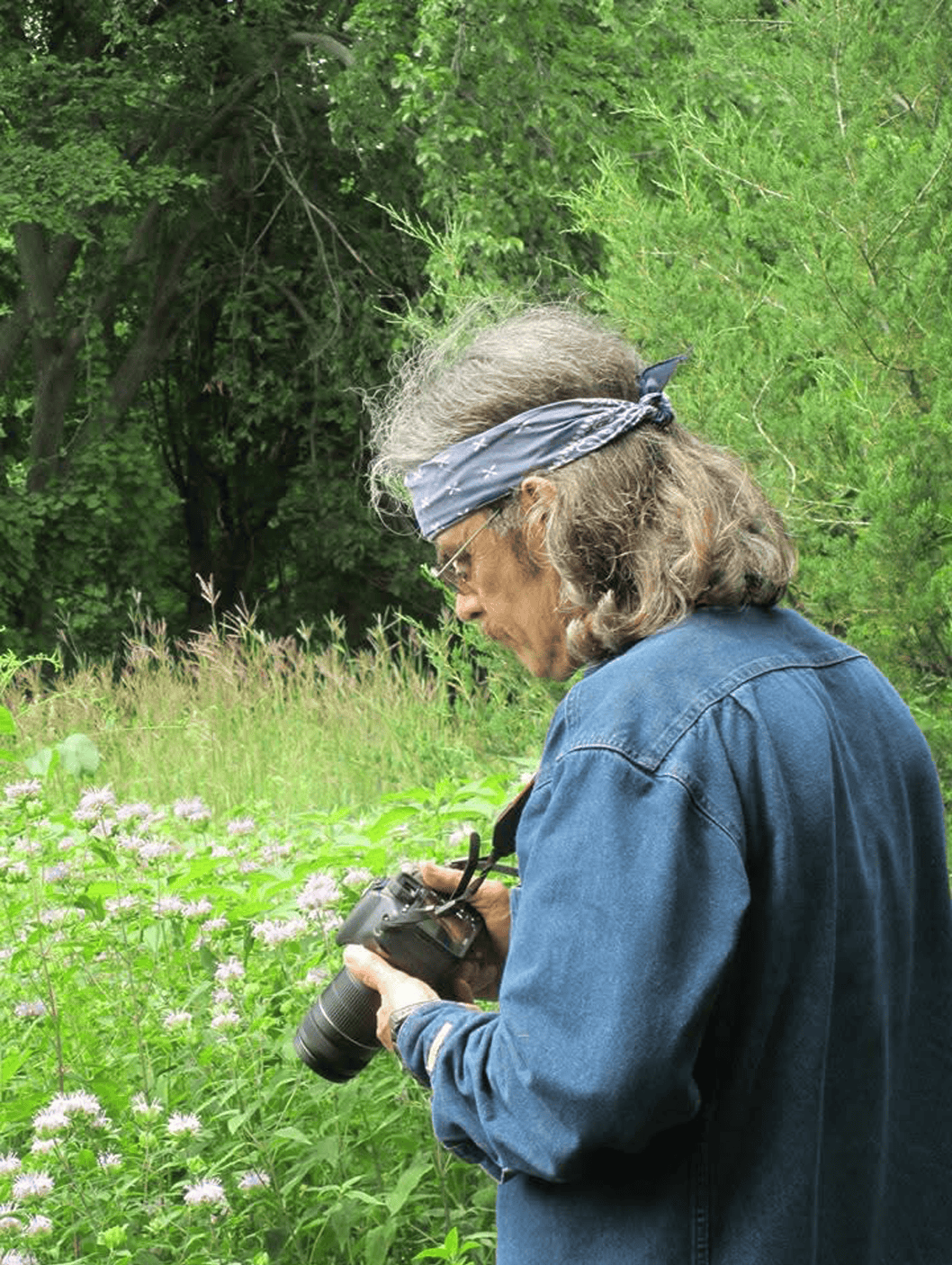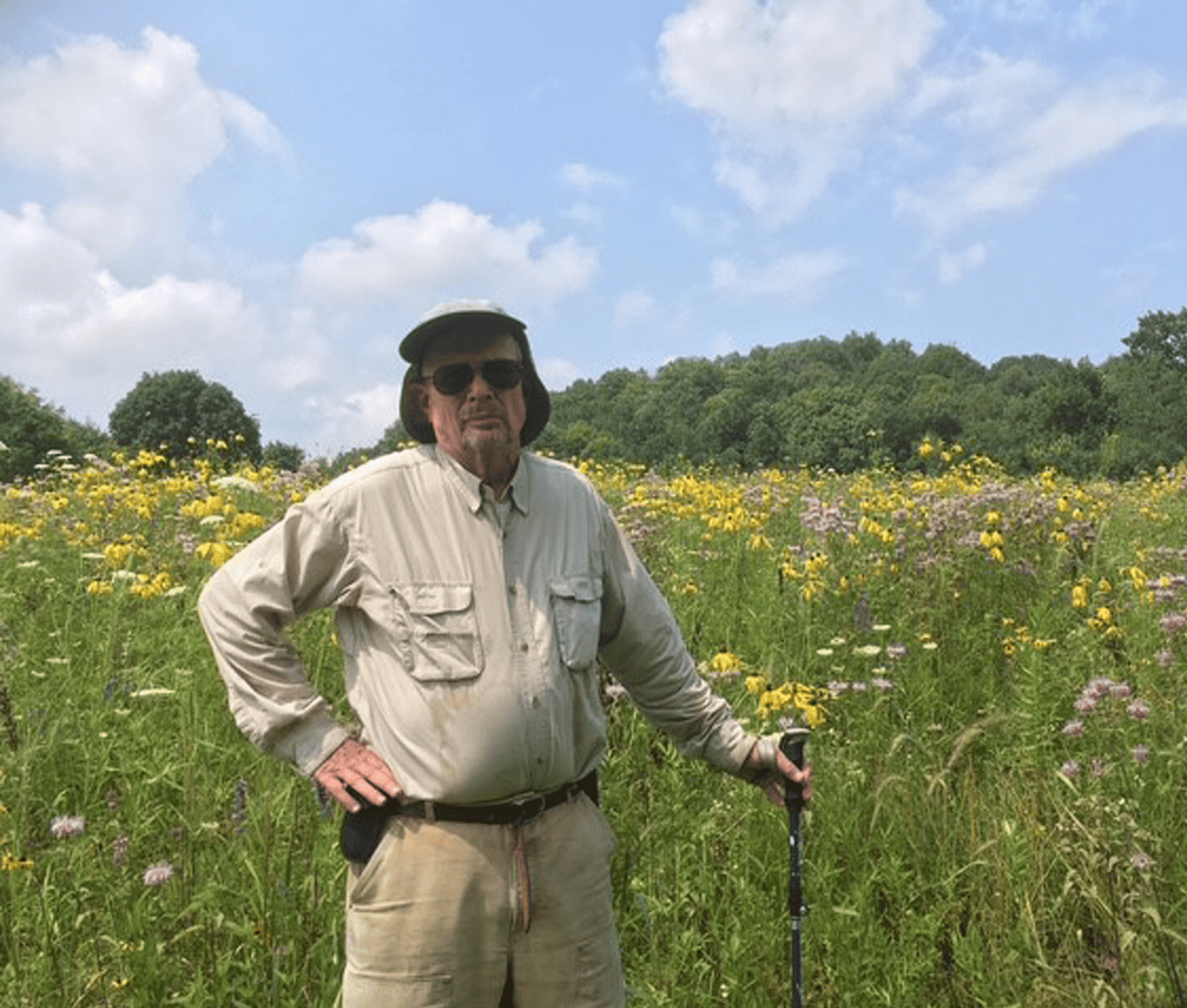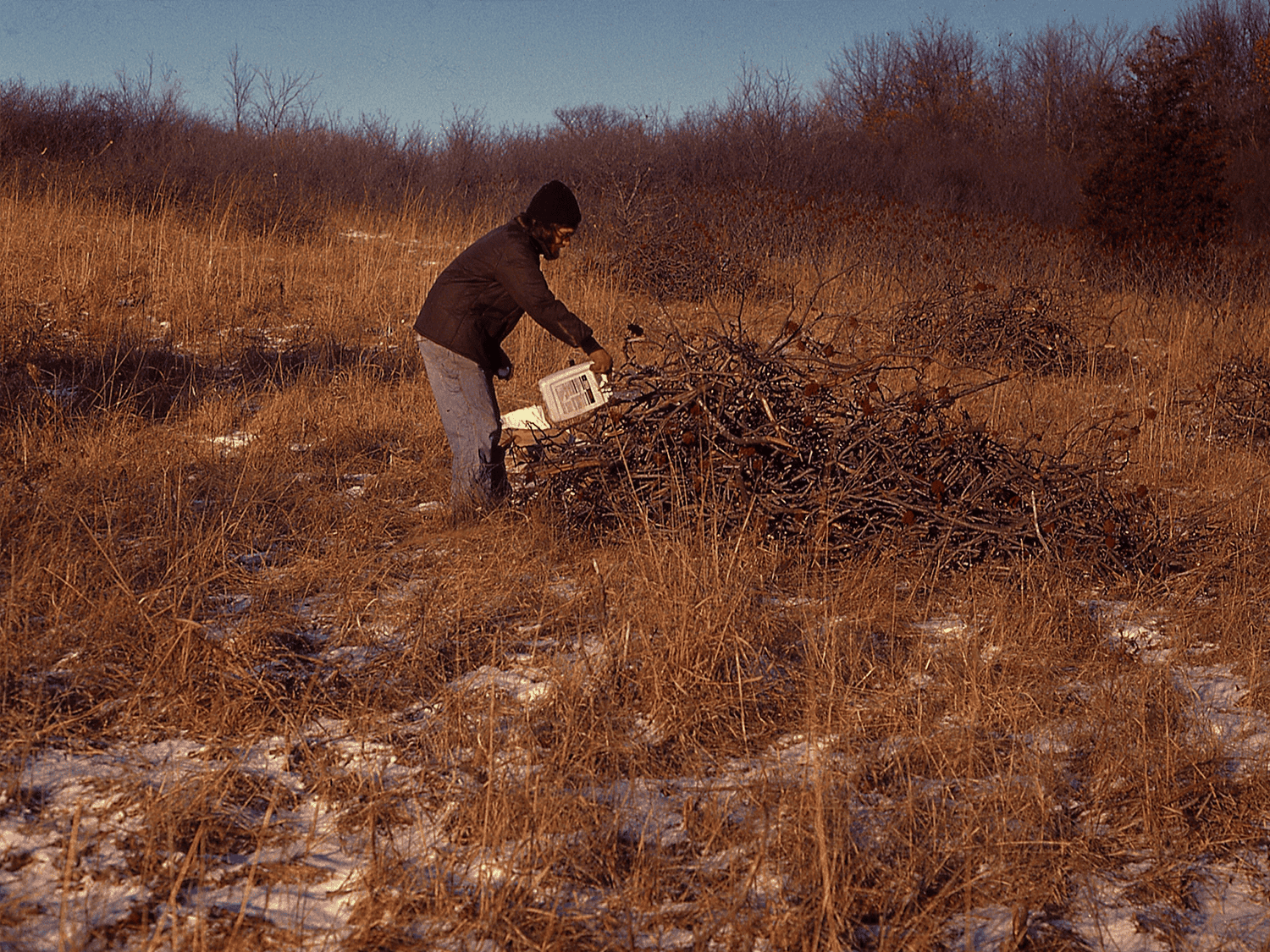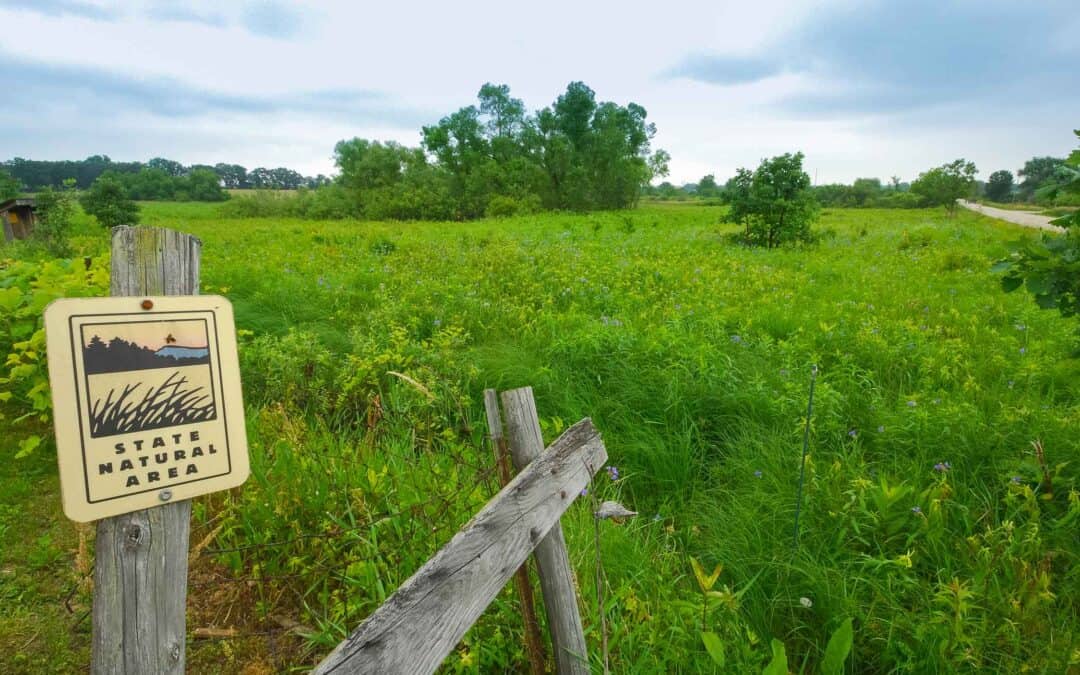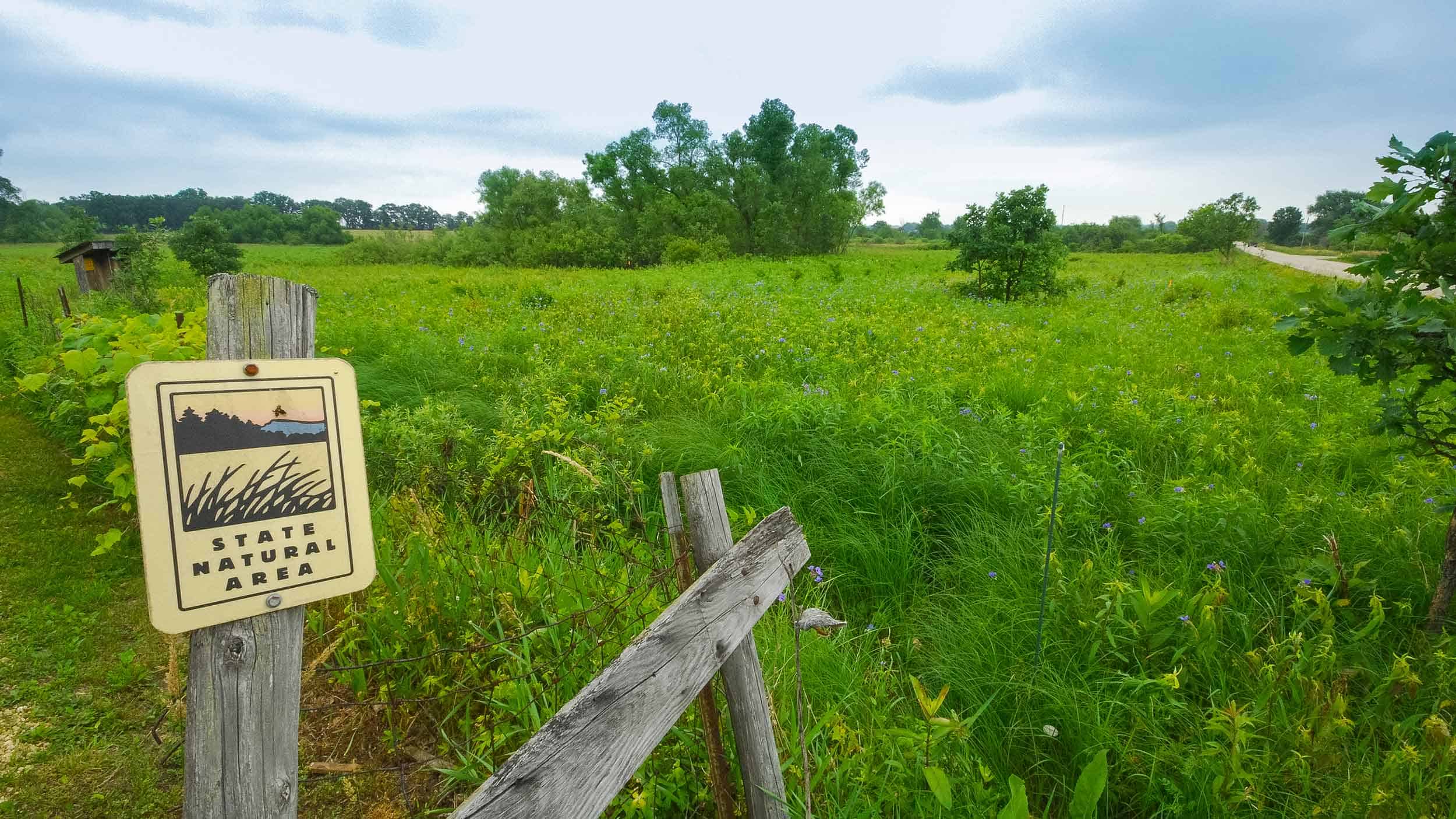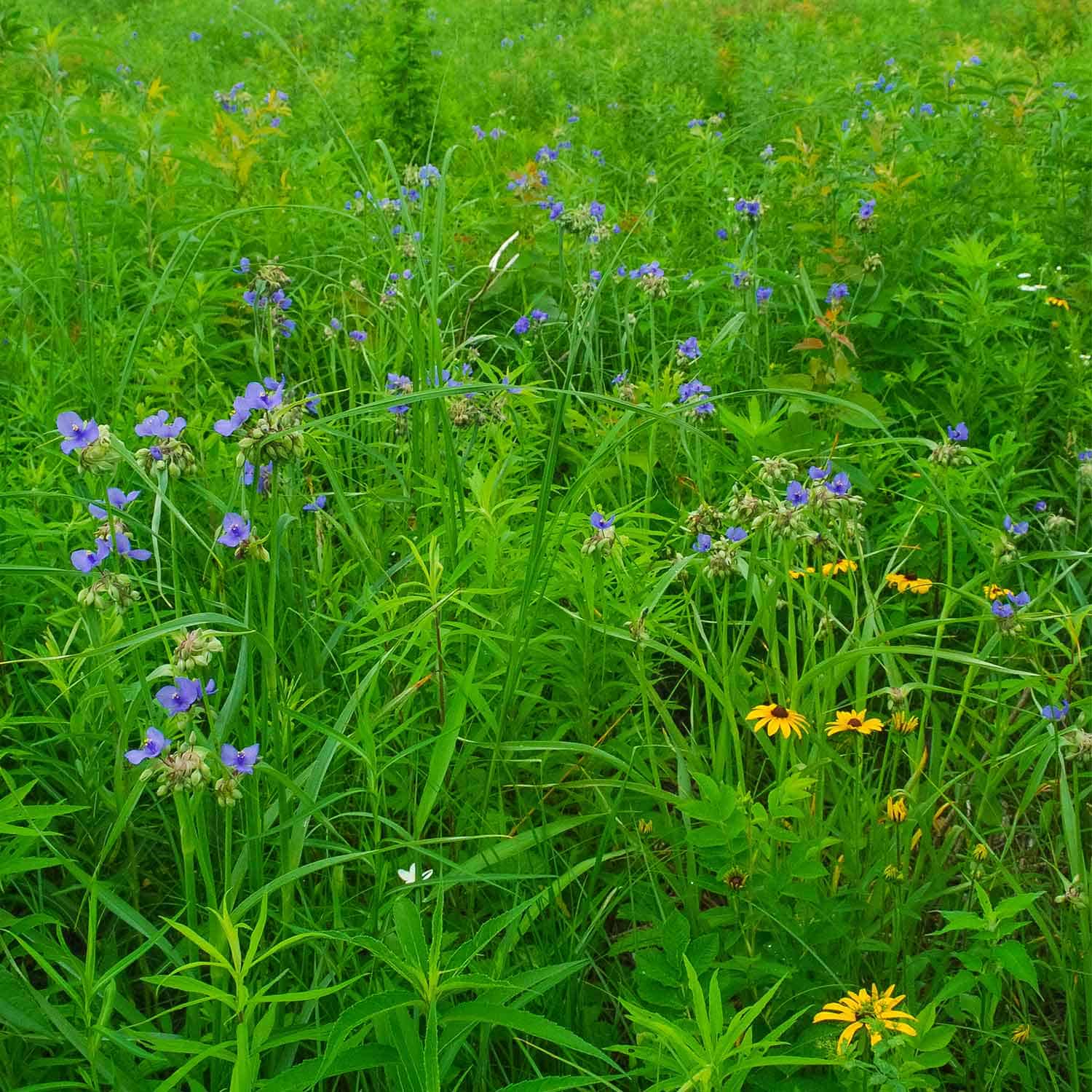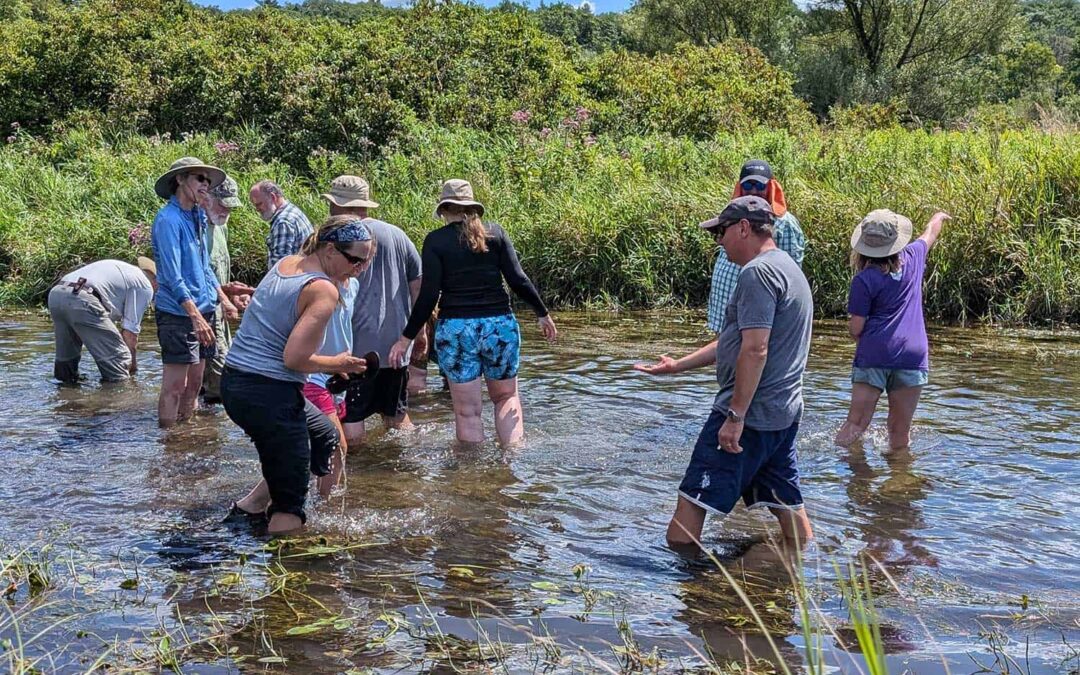
Rare Sand Barrens Ecosystem Preserved in Southeast Wisconsin
Rare Sand Barrens Ecosystem Preserved in Southeast Wisconsin
Written by Reid Bartholomew
July 7, 2025

Photo by Jessica Bizub
EAGLE, WI—Wisconsinites can now visit one of Southeast Wisconsin’s rarest kinds of habitats just outside of Milwaukee. Mukwonago River Oak Barrens, a 61-acre property protected by The Prairie Enthusiasts in June of this year, features sand barren habitat, an incredible diversity of plant and animal life, and access to the pristine Mukwonago River.
Located in Waukesha County, WI, Mukwonago River Oak Barrens harbors one of the finest remaining examples of sandy oak barrens in the region—an ecosystem rare in Southeast Wisconsin. The 61 acres of the former Christmas tree farm is teeming with life, supporting 275 native plant species within a mosaic of sedge meadow, moist savanna, and prairie. The Mukwonago River winds through the property in a lazy flow that belies the activity beneath the surface; over 50 species of fish can be found in the river, rivalling the diversity of much larger systems like the Wisconsin River and Mississippi Rivers.
Pamela Meyers has been caring for the property for decades, working with her neighbors to support the health of the watershed and improve the quality of the habitat on the site. Knowing that the land was special, she has been bringing botanists, biologists, and ecologists to the property over the years so that she can understand the habitat better.
One of those experts was The Prairie Enthusiasts Ecologist, Dan Carter. When the two walked the property together four years ago, Dan immediately saw what Pamela did—an ecosystem exceedingly rare in the region.
“This piece of habitat has survived where so much has been lost to invasive brush and development—there’s almost nothing else like this in Southeastern Wisconsin,” Dan says.
The site represents a swell of Prairie Enthusiasm in the Glacial Prairie Chapter—the second property protected by the Chapter, it is the largest site that they have protected to date. The presence of such rare habitat and the abundance of life that it supports has drawn together a tight-knit community dedicated to restoring the land to its full potential.
For a year prior to The Prairie Enthusiasts protecting the site, volunteers with the Glacial Prairie Chapter have shown up weekly to steadily expand the footprint of the most valuable habitats on the site, linking the remnant old-growth ecosystems together into a single unit. The work is strenuous—massive Scotch pines leftover from the years as a Christmas tree farm are removed to provide light for native species in the oak barrens, and every acre cleared requires diligent follow-up of prescribed burns and the sowing of native seeds—but Pamela has marveled at the willingness of Prairie Enthusiasts to get their hands dirty to care for the 275 native species on the site.
Located under an hour from Milwaukee in Waukesha County and minutes away from several units of the Kettle Moraine State Forest, the Mukwonago River Oak Barrens is open to the public for a variety of outdoor recreation, including bird watching, hiking, and hunting. The site’s protection creates opportunities for education on ecology and land management practices for volunteers and local landowners alike.
Support from Wisconsin’s Knowles-Nelson Stewardship Program and Members of The Prairie Enthusiasts have helped make the protection of this fire-dependent ecosystem possible.
To learn more about Mukwonago River Oak Barrens, including recreational information and volunteer opportunities, visit ThePrairieEnthusiasts.org/Project/Mukwonago-River-Oak-Barrens.
About The Prairie Enthusiasts
The Prairie Enthusiasts is an accredited land trust that seeks to ensure the perpetuation and recovery of prairie, oak savanna, and other fire-dependent ecosystems of the Upper Midwest through protection, management, restoration, and education. In doing so, they strive to work openly and cooperatively with private landowners and other private and public conservation groups. Their management and stewardship centers on high-quality remnants, which contain nearly all the components of endangered prairie communities.
Primary Contact: Sarah Barron, Advancement Manager
608-676-7806
SBarron@ThePrairieEnthusiasts.org
Secondary Contact: Debra Behrens, Executive Director
608-676-0985





